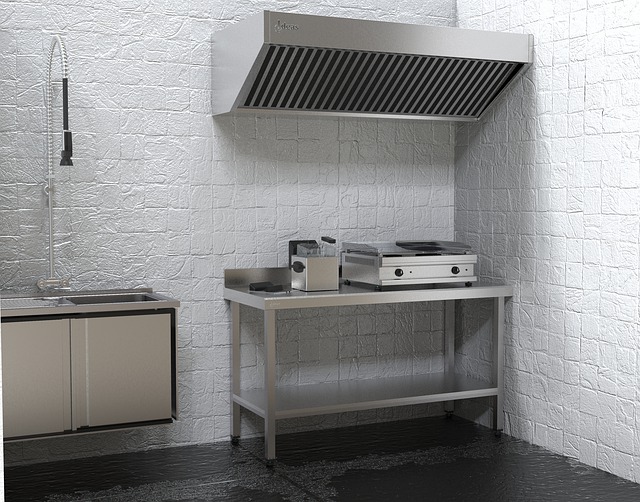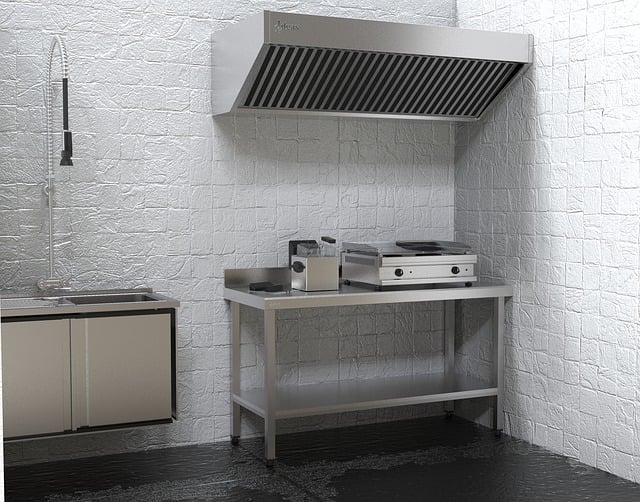
Cleanliness, as the old adage goes, is purportedly next to Godliness. However when those levels are less personal and more far-reaching, they should be increased still further to ensure the safety of all concerned. We know what you're thinking. Such a broader-based adage is a bit of a mouthful, but it's the theory and practice we're more focused on in this blog. And the hot water you could land in should you choose to ignore kitchen duct cleaning advice, methodology and accountability.
Just to put the very real threat of what could, potentially happen, should you choose to overlook the importance of kitchen duct cleaning, we draw your attention to the percentages game. And in particular the one which stresses that a staggering 70% of fires which start in commercial kitchens do so as a result of faulty ducting and ventilation. Which can be originally traced back to the build-up of grease and fat, both of which are accelerants when it comes to triggering a fire. Therefore highlighting the need to keep on top of kitchen duct cleaning.
Often those responsible for health and safety practices within a commercial kitchen surround fail to acknowledge the more deep-seated problem, when it comes to identifying the unseen dangers of neglected ducts and ventilation systems. Providing the filters and canopy appear clean and fit for purpose, then any further scrutinising can go amiss; which is the juncture at which extraction systems can go rogue, so to speak.
So, The Regular Cleaning of Ducts Ensures that Commercial Kitchens Don't Pose a Fire Hazard? Any Other Benefits?
Significantly reducing the threat of kitchen fires should be enough of a motivational factor in terms of keeping on top of duct housekeeping full stop, however along with this imperative measure there's also the not inconsequential matter of creating and maintaining a health environment for employees, let's not forget. Designed and manufactured to encourage optimal air flow in a commercial kitchen scenario, extractor fans require routine cleaning protocols to safeguard the wellbeing of those exposed to the assemblage.
In the event that the accumulative presence of grease, dirt, dust, fat and any other largely unseen substances which manifest as a by-product of cooking on a more commercial scale congeal and block duct work, then the ventilation system will no longer be able to perform its fundamental duties. That being the removal of heat, cooking odours and residue, together with carbon monoxide found within the immediate atmosphere.
Surely if the Existing Commercial Kitchen Duct and Ventilation System is Doing its Job Right, Then Employee/Public Health Remains Uncompromised?
Yes, providing that the powers that be have done everything to ensure that the system in place is both regularly monitored and maintained, subsequently meaning that it's still fit for purpose. Failure to do this, could lead to the issues we've already mentioned. Many kitchen have canopy-style systems which rely on filters as a first line of defence against the spectre of grease and a range of other contaminants which are, essentially, referred to as occupational hazards within a commercial kitchen environ.
That being said, these filters are not always entirely bullet-proof and sometimes smaller particles will, inevitably permeate the filters and pass into the ductwork itself. Although the extraction system is relatively user-friendly and accessible, the ductwork which lies behind can turn out to be more complex. Thus necessitating expert help in the shape of kitchen duct cleaning/hygiene specialists being recruited. Failure to recognise issues and therein either tackle the problem yourself or alternative employ the dedicated services of professionals operating in this field could result in being prosecuted, should a fire inspector report negligence in a commercial kitchen. Therefore vigilance needs to be a high priority in these circumstances, starting with education with regards to TR/19.
What is TR/19?
According to the Regulatory Reform (Fire Safety) Order 2005, it is a statutory requirement that all commercial premises should follow fire safety standards and the ‘responsible person’ should perform certain fire safety duties to ensure satisfactory fire precautions. Which means its legally-binding compliance which requires adherence to by the letter of the law. To minimise any perceived health risks, it's compulsory to reduce all possible fire risks; with the ductwork discovered in commercial kitchen set-ups presenting a clear and present danger. Hence the governance laid out by the requirements of TR/19 which exclusively cover duct cleaning services and stipulated procedures; as pre-determined/issued by BESA (British Standard and European Norm BSEN:15780) and BG49/2013 (BSRIA’s guide on Commissioning Air Systems).
Officially classed as BESA TR/19, this legally-compliant governance exists in the form of duct-work cleaning guidelines, provided by Building Engineering Services Association (BESA) for internal cleanliness of ventilation systems. Coming into effect in 2005, the guidelines were first introduced by amalgamation of pre-existing TR/17 and DW/TM2 guidelines. Once a ductwork/ventilation system is deemed TR19-compliant, it has been found that average total high risk combustion load levels (HR-CLLs) can be reduced by a total of 83%. Hence the critical nature of following the industry guidelines from the outset.
Has TR/19 Remained The Same Since its Inception in 2005, Or Has There Been Timely Revisions?
As of July 2014, the latest edition of TR/19 (by B&ES) was published, and subsequently brought in line with the provisions spelt out in BSEN:15780. By that token, all the very latest compliance which governs general ventilation ductwork for supply and extraction. In a nutshell, these amendments have fostered a less 'one size fits all' approach to ductwork installation in the first instance, which have been subjected to a new classification system. This rates them in a high, medium or low category, directly relating to the required cleanliness levels demanded, in accordance with individual purposes. As a point in question, hospitals would,theoretically, be rated by the following code. Operating theatres, laboratories and intensive care units, for example, would probably be rated high, with kitchens classed as medium and laundry facilities, low. Ultimately all premises will have different areas which will fulfil different ductwork classification criteria, yet conversely the required degree of cleanliness (for lifecycle, pre-commissioning) will remain fully optimised.
The Next Question is Of Course, How Often Should I Carry Out Cleaning of Commercial Kitchen Ductworks?
As we already now know, contaminated air is exhausted out of a commercial kitchen and replaced with fresh, clean air in a continuous cycle. However as we are also aware, due to the large volumes of air being moved through the relatively small spaces positioned within the assemblage as a whole (but more specifically at the front-facing outlets), the purposefulness and security of the system depends on various contributing factors. These range from original design and construction through to installation and (what we're concerned with via this blog) cleaning and maintenance schedules.
In terms of the latter, the frequency of ductwork cleaning is covered in TR/19, and broadly-speaking states that should a commercial kitchen be in use for upwards of 16 hours per day, then the system ideally needs to be cleaned once every two months. That being said, the foodstuffs cooked play a pivotal role within these guidelines too, with greasier products equaling increased risk of contaminant build-up.
More exacting inspection intervals are cited beneath, and as per TR/19 guidelines, and refer to the high, medium and low risk categories we outlined above;
• Air Handling Units - Low Category = once every 24 months, Medium and High Category = once every 12 months
• Filters - Low Category = once every 12 months, Medium = once every 12 months, High = once every 6 months
• Humidifiers - Low Category = once every 12 months, Medium and High = once every 6 months
• DUCTS - LOW CATEGORY = ONCE VERY 48 MONTHS, MEDIUM = ONCE EVERY 24 MONTHS, HIGH = ONCE EVERY 12 MONTHS
• Terminals - Low Category = once every 48 months, Medium = once every 24 months, High = once every 12 months
Any Other Considerations Regarding the Importance of Kitchen Duct Cleaning?
Only what we stressed earlier re: potential for carbon monoxide poisoning. Being that it's a colour and odourless gas that can lead to severe poisoning and potential death, if an individual is exposed to high levels, that blocked commercial kitchen extractors and ductworks can increase this risk, if the extracting element fails to remove this noxious gas sufficiently from a commercial kitchen.






